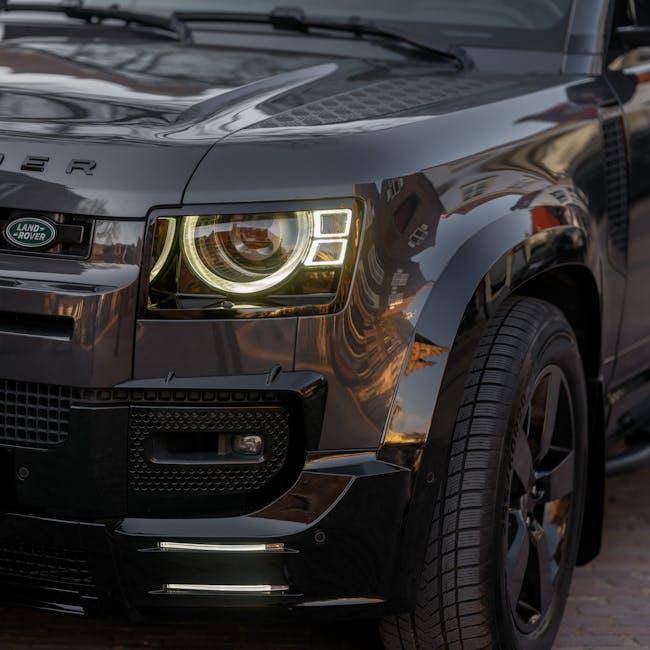When night falls and the road ahead fades into darkness, your car’s headlights become more than just lights—they are your guiding stars. But what happens when one of those stars flickers out, leaving you driving with diminished visibility and safety? Replacing a car headlight bulb might seem like a daunting task, shrouded in technical jargon and hidden behind the car’s front grille. Yet, with a little know-how and the right tools, it’s a straightforward process that puts control back in your hands. In this article, we will illuminate the steps to confidently replace your car’s headlight bulbs, ensuring your journey remains bright and safe no matter the hour.
Table of Contents
- Choosing the Right Replacement Bulbs for Your Vehicle
- Preparing Safely Before You Start the Replacement
- Step-by-Step Guide to Removing Old Headlight Bulbs
- Ensuring Proper Installation for Optimal Lighting
- Testing and Adjusting Your New Headlights
- Maintenance Tips to Extend the Life of Your Bulbs
- Q&A
- In Retrospect
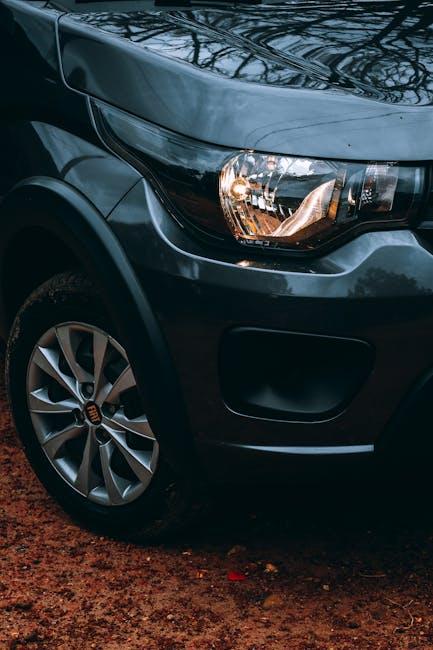
Choosing the Right Replacement Bulbs for Your Vehicle
Selecting the perfect replacement bulbs for your vehicle goes beyond just matching numbers on the packaging. First, consider the type of bulb your car requires—halogen, LED, or HID. Each comes with distinct advantages; LED bulbs offer longer lifespans and energy savings, while halogens are typically more affordable and easier to replace. Checking your vehicle’s manual or manufacturer recommendations helps ensure compatibility and optimal performance. Moreover, take into account the brightness and color temperature, as these factors influence how clearly you see the road and how other drivers perceive your lights.
It’s also vital to verify the bulb’s specifications carefully. Use the following checklist to avoid common pitfalls:
- Bulb size and fitment: Ensure the new bulb fits perfectly into your headlight housing.
- Voltage and wattage: Match these to your vehicle’s electrical system to prevent damage.
- Beam pattern and alignment: Choose bulbs that maintain proper beam focus for safety.
- Legal compliance: Some bulbs may not be street-legal in your area; always check local regulations.
| Bulb Type | Pros | Cons | Typical Lifespan |
|---|---|---|---|
| Halogen | Affordable, easy replacement | Shorter life, more heat | 500-1,000 hours |
| LED | Energy efficient, bright | Higher initial cost | 15,000-30,000 hours |
| HID | Very bright, longer range | Complex installation | 2,000-3,000 hours |

Preparing Safely Before You Start the Replacement
Before diving into the task of changing your car’s headlight bulbs, ensuring your safety is paramount. Start by parking your vehicle on a flat, stable surface away from traffic. Engage the parking brake to prevent any accidental movement. Always work when the engine is cool and the headlights have been off for at least 10 minutes to avoid burns from hot components. Don’t forget to disconnect the car battery or remove the fuse related to the headlights to eliminate the risk of electrical shocks or short circuits during the replacement process.
Gathering all necessary tools and accessories beforehand helps streamline the job and reduces the chance of interruptions. Prepare a clean microfiber cloth to handle the bulbs without touching the glass, as oils from your fingers can shorten the bulb’s lifespan. Having these essentials on hand will also make the switch smoother:
- Replacement bulbs matching your vehicle’s specifications
- Screwdrivers and socket wrenches for accessing housing
- Latex gloves for safer handling
- Owner’s manual for model-specific guidance
| Step | Preparation |
|---|---|
| 1 | Park on flat ground & engage brake |
| 2 | Wait 10 minutes after lights off |
| 3 | Disconnect battery or fuse |
| 4 | Gather tools & bulb type |
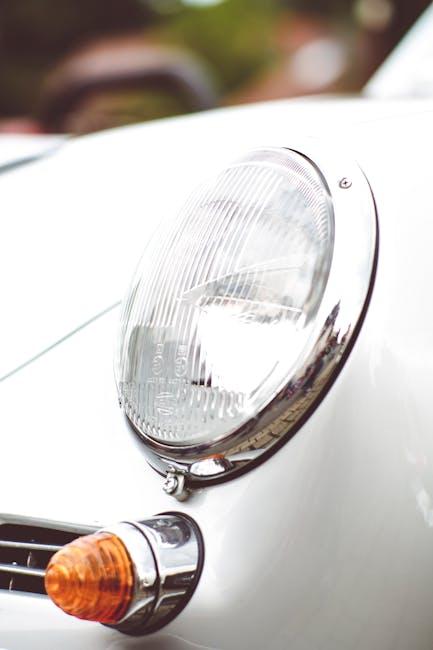
Step-by-Step Guide to Removing Old Headlight Bulbs
Begin by ensuring your car is turned off and the headlights are cool to the touch. Open the hood and locate the back of the headlight assembly. Depending on your vehicle, you may need to remove a protective cover or unplug a rubber boot to access the bulb. Always wear gloves or use a clean cloth to avoid transferring oils from your skin onto the new bulb which can shorten its lifespan. Carefully detach the electrical connector by pressing the release tab or gently twisting it free.
Once disconnected, identify the bulb securing mechanism, which is usually a metal clip, a plastic ring, or a simple twist lock. Gently release or twist this mechanism to free the bulb. Avoid forcing it, as excessive pressure might damage the assembly or the socket. After removing the old bulb, inspect the socket for corrosion or debris and clean it if necessary before inserting the new replacement.
- Switch off engine and headlights
- Open hood, locate headlight assembly
- Remove any covers or boots
- Disconnect electrical connector
- Release bulb retaining clip or twist lock
- Pull bulb straight out
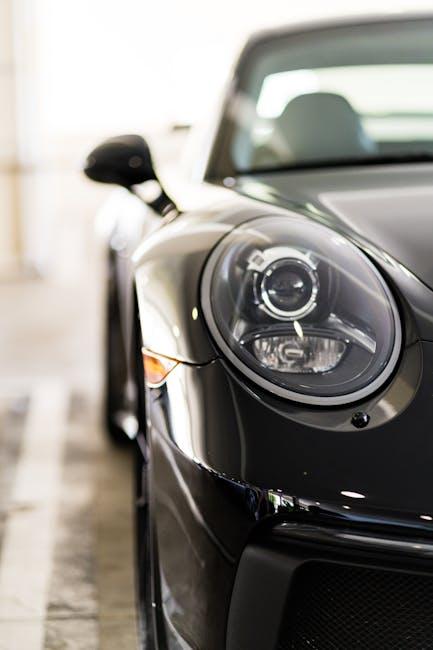
Ensuring Proper Installation for Optimal Lighting
Proper installation is the foundation for ensuring your newly replaced headlight bulbs shine at their brightest. Before securing the bulb in place, always double-check for cleanliness—any dirt or oils on the bulb can drastically reduce its life and brightness. Use gloves or a clean cloth when handling the bulb to avoid transferring oils from your skin. Additionally, aligning the bulb correctly within the housing is crucial. An off-center or loose bulb can scatter light improperly, causing glare for other drivers and reducing your own visibility.
Pay close attention to these key points during installation:
- Secure fit: Ensure the bulb clicks firmly into its socket to prevent vibrations while driving.
- Correct bulb type: Verify that you have the exact bulb specified in your car’s manual to avoid electrical or compatibility issues.
- Seal intact: Check that rubber gaskets or dust covers are properly reinstalled to protect against moisture and debris, which can fog the lens and damage the bulb.
| Common Mistakes | Impact | Solution |
|---|---|---|
| Touching the bulb glass | Shortened bulb life | Use gloves or cloth |
| Loose bulb installation | Flickering lights | Secure firmly in socket |
| Skipping dust cover | Moisture buildup | Reinstall seals |

Testing and Adjusting Your New Headlights
Once your new bulbs are in place, it’s essential to ensure they function correctly to provide maximum visibility. Start by turning on your headlights in a dimly lit environment, such as a garage or at dusk, to verify both bulbs illuminate evenly and at full brightness. Look for flickering or dim spots, which can indicate poor connections or faulty bulbs. If you notice any irregularities, double-check the wiring and socket for corrosion or loose connections, and secure them firmly.
Next, accurately align your headlights to avoid blinding other drivers and improving road illumination. Park your car on a level surface facing a wall about 25 feet away, and mark the center of each headlight beam on the wall with tape. Use the adjustment screws—usually found near the headlight housing—to align the light beams so the top edge of the brightest part of the beam sits slightly below the marks. Here’s a simple guide to focus adjustment:
| Adjustment Direction | Effect |
|---|---|
| Turn screw clockwise | Beam moves upward or right |
| Turn screw counterclockwise | Beam moves downward or left |
- Check both low and high beams separately to ensure both align properly.
- Test briefly on the road at night to confirm no glare is projected onto oncoming traffic.
- Fine-tune adjustments as needed for optimal visibility and safety.
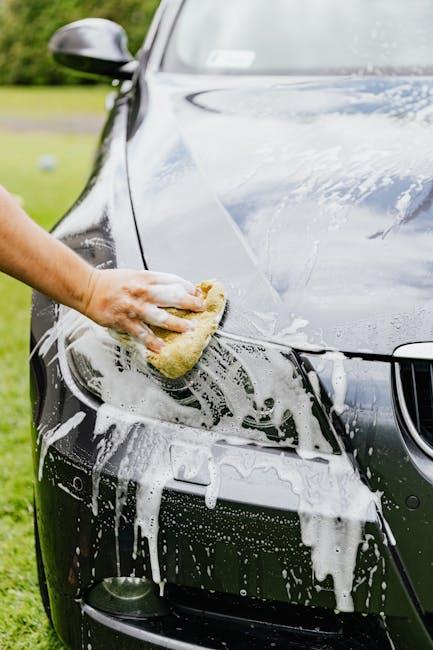
Maintenance Tips to Extend the Life of Your Bulbs
Keeping your car’s headlight bulbs in excellent condition goes beyond timely replacement. Simple habits can significantly boost bulb longevity and maintain optimal brightness. For example, avoid touching the glass with bare hands during installation, as oils from your fingers create hot spots that shorten bulb life. Also, ensure a secure fit to prevent moisture and dirt from entering the housing, which can cause corrosion or filament damage over time.
Additionally, regular maintenance can catch mild issues before they become major problems. Consider these practical tips to preserve your bulbs’ performance:
- Clean the lens covers with a soft cloth and mild cleaner to prevent light dimming.
- Inspect wiring connections for corrosion or looseness which can affect power flow.
- Use voltage stabilizers if your vehicle has electrical fluctuations that may harm bulbs.
- Store spare bulbs in a cool, dry place away from direct sunlight.
| Maintenance Check | Frequency | Benefit |
|---|---|---|
| Lens Cleaning | Monthly | Maximizes clarity & brightness |
| Wiring Inspection | Every 6 months | Prevents flickering & shorts |
| Moisture Check | After heavy rain/washing | Reduces corrosion risk |
| Voltage Stability Test | Annually | Protects bulb filament |
Q&A
Q: Why should I learn to replace my car headlight bulbs myself?
A: Changing your own headlight bulbs can save you time and money, plus it gives you a handy skill that keeps you prepared for the unexpected. No more waiting for a mechanic or paying extra for a simple fix!
Q: What tools do I need to replace a headlight bulb?
A: Usually, just a few basics—a screwdriver, gloves to keep oils off the new bulb, and maybe a ratchet set depending on your car. Always check your owner’s manual for specifics.
Q: How do I know which bulb to buy?
A: Your vehicle’s manual is your best friend here. It lists the exact bulb type and specifications. You can also ask at auto parts stores or look up your car’s make and model online.
Q: What’s the safest way to remove the old bulb?
A: First, turn off your engine and ensure the bulbs are cool to the touch. Disconnect the power connector, remove any securing clips carefully, and gently pull the bulb out—no twisting or forcing needed unless your manual says otherwise.
Q: Should I handle the new bulb with bare hands?
A: It’s best not to. Oils from your skin can shorten the bulb’s life or cause it to burn unevenly. Wear gloves or use a clean cloth to handle the new bulb.
Q: Any tips for installing the new bulb?
A: Align it carefully with the socket, don’t touch the glass, and secure it properly. Then reconnect the wiring and test the light before finalizing everything.
Q: What if my headlights still don’t work after replacement?
A: Double-check the connections and bulb seating. If it’s still a no-go, the issue might be with the fuse, wiring, or a different part of the lighting system.
Q: How often should I replace headlight bulbs?
A: Bulbs don’t have a precise lifespan, but checking them every 6 months or when you notice dimming is wise. Replacing them in pairs ensures even lighting on the road.
Q: Can I replace all car headlight bulbs the same way?
A: Not always. Some cars have complex housings or require removing parts to access the bulbs. Always refer to your specific vehicle’s guide for detailed instructions.
Q: Is LED or halogen better for headlight replacement?
A: It depends on your vehicle and preferences. Halogen bulbs are common and affordable, while LEDs offer brighter, longer-lasting light but may require compatible housings or wiring. Check what fits your vehicle and local regulations.
Replacing your car’s headlight bulbs yourself is a straightforward task that brightens your driving safety and saves your wallet. Just be patient, cautious, and consult your car’s instructions—then shine on!
In Retrospect
Replacing your car’s headlight bulbs may seem like a small task, but it’s one that shines a big light on safety and convenience. With a little patience and the right steps, you can tackle this simple maintenance chore without a visit to the mechanic. So next time your headlights dim or flicker, remember—you’ve got the know-how to brighten your way ahead. Safe travels and clear roads!

